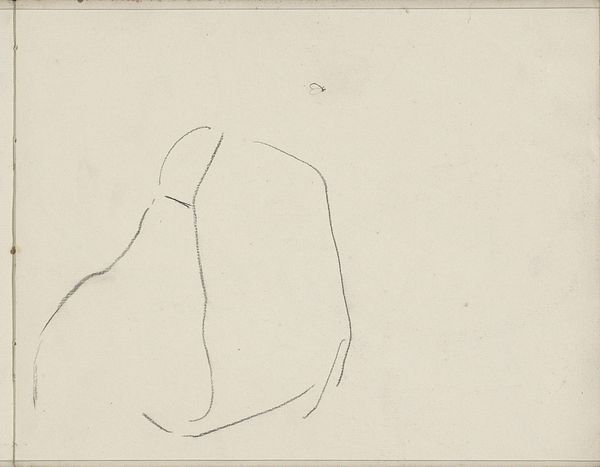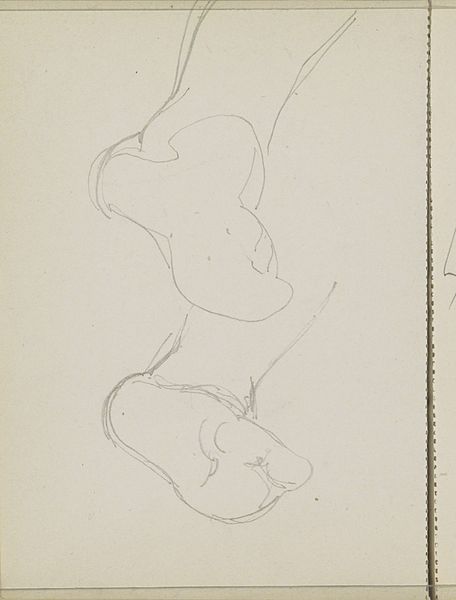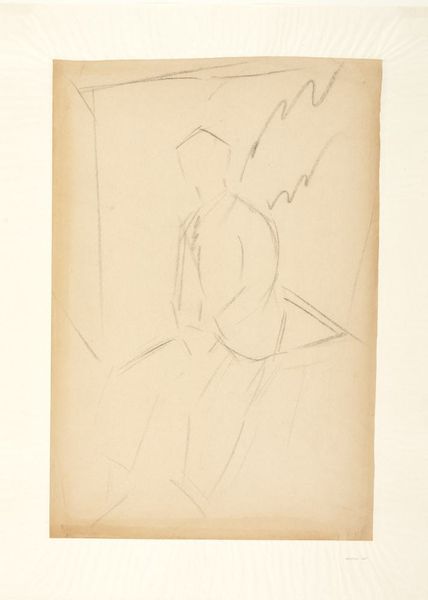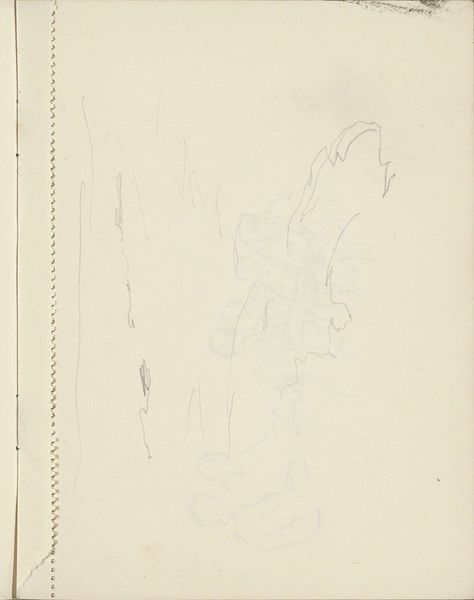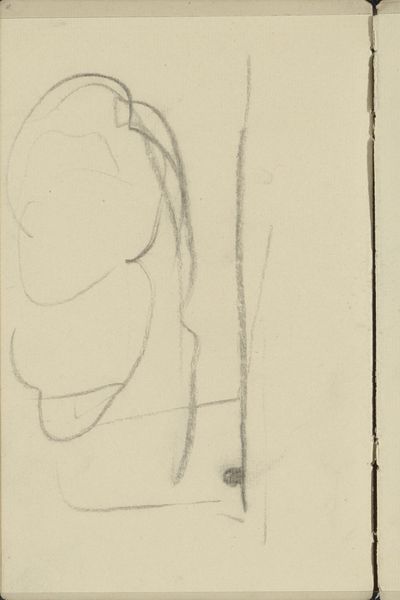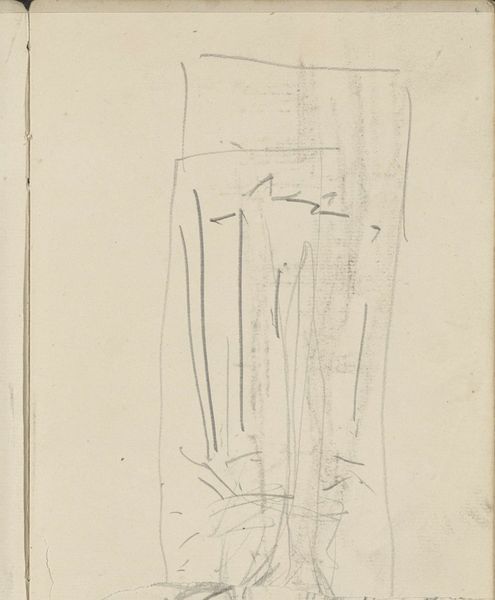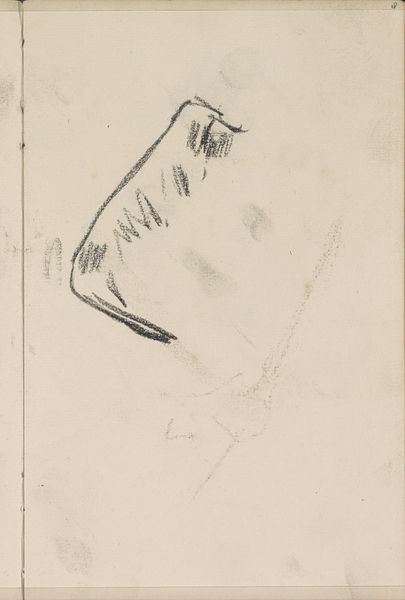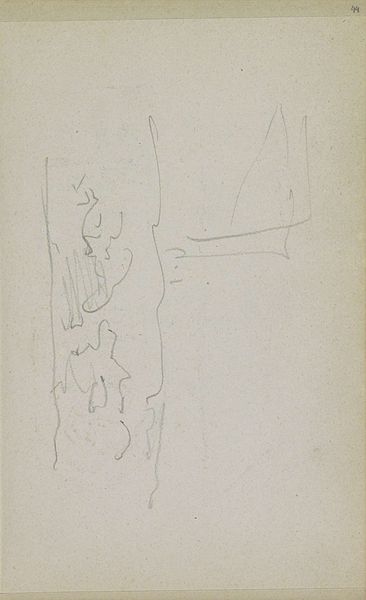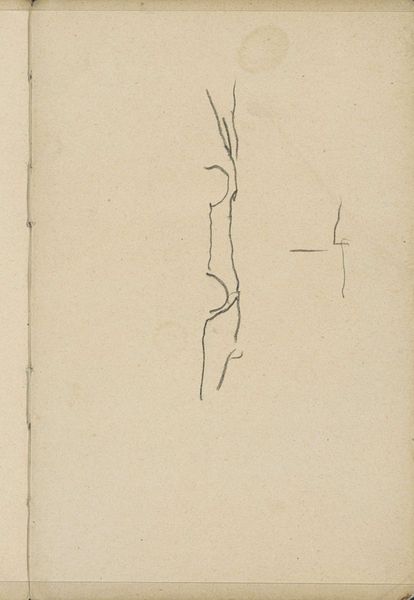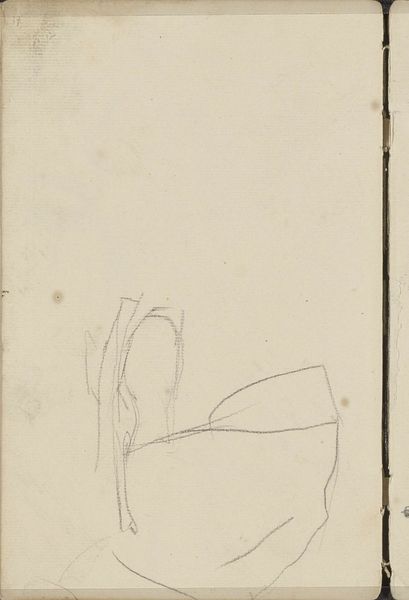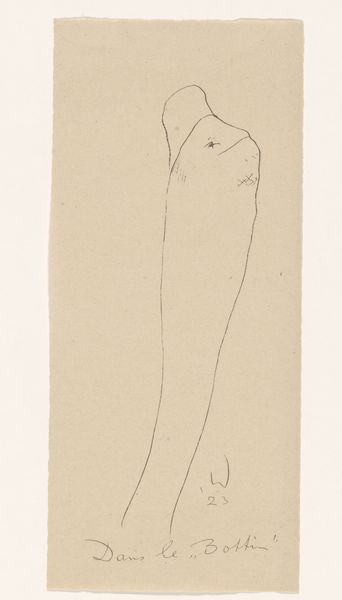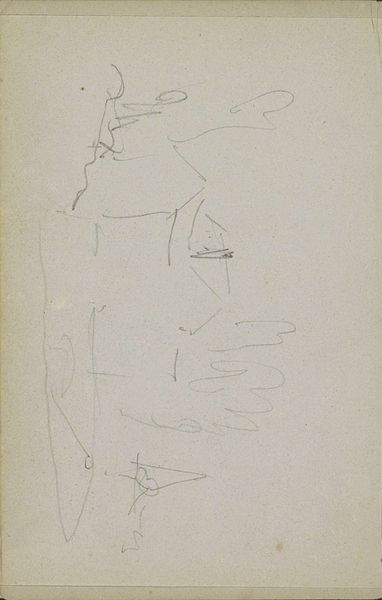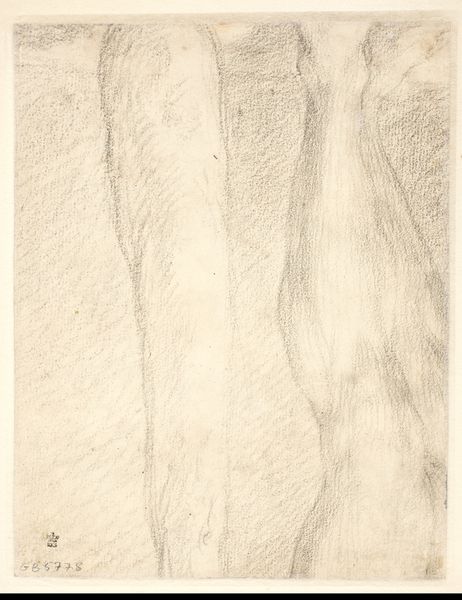
drawing, pencil
#
portrait
#
drawing
#
figuration
#
pencil
Dimensions: 209 mm (height) x 124 mm (width) (bladmaal)
Curator: Before us is Karl Isakson’s pencil drawing, “Stående model,” created between 1914 and 1915. Editor: There's an unsettling simplicity here. Almost ghostly, the stark lines suggesting a form without truly defining it. The blank background amplifies the feeling of isolation. Curator: The reduction of form to its bare essentials is deliberate, wouldn't you say? The visible pencil strokes add a sense of immediacy; we witness the artistic process. The composition guides the eye upward along the figure, lingering on the gentle curve that represents the model’s hip. Editor: Yes, but what does that figure evoke? To me, it speaks to the vulnerability inherent in the act of being observed. The missing facial features contribute to a sense of anonymity. It's everyone and no one. The figure has a universal, perhaps even archetypal quality. Isakson strips the figure to its basic form. This minimalist style emphasizes the universality of the form over the individual. It hints at a deeper emotional weight beyond what is immediately visible. Curator: And there is the art historical context to consider: the increasing interest, during this period, in abstracting forms and exploring pure line, driven by artists who moved beyond representational accuracy to find new visual languages. It challenges conventional ideas around art. I do agree that Isakson does not attempt a like-for-like rendering. He is showing us a certain view of form. Editor: The absence of detail, combined with the deliberate incompleteness of the sketch, opens a space for reflection. In my mind, Isakson reminds us how meaning is often co-created between the artist and the viewer. The power of suggestion through symbols is more powerful than accurate replications. Curator: I see your point. We project ourselves onto this image and fill the missing gaps of our own understanding, bringing ourselves to its forms. The structural economy compels us to consider form, meaning, and perception. Editor: Ultimately, this artwork stays with you because of what is not said or shown as much for what is there. It is an invitation into the power of the gaze and artmaking to be both present and incomplete.
Comments
No comments
Be the first to comment and join the conversation on the ultimate creative platform.
